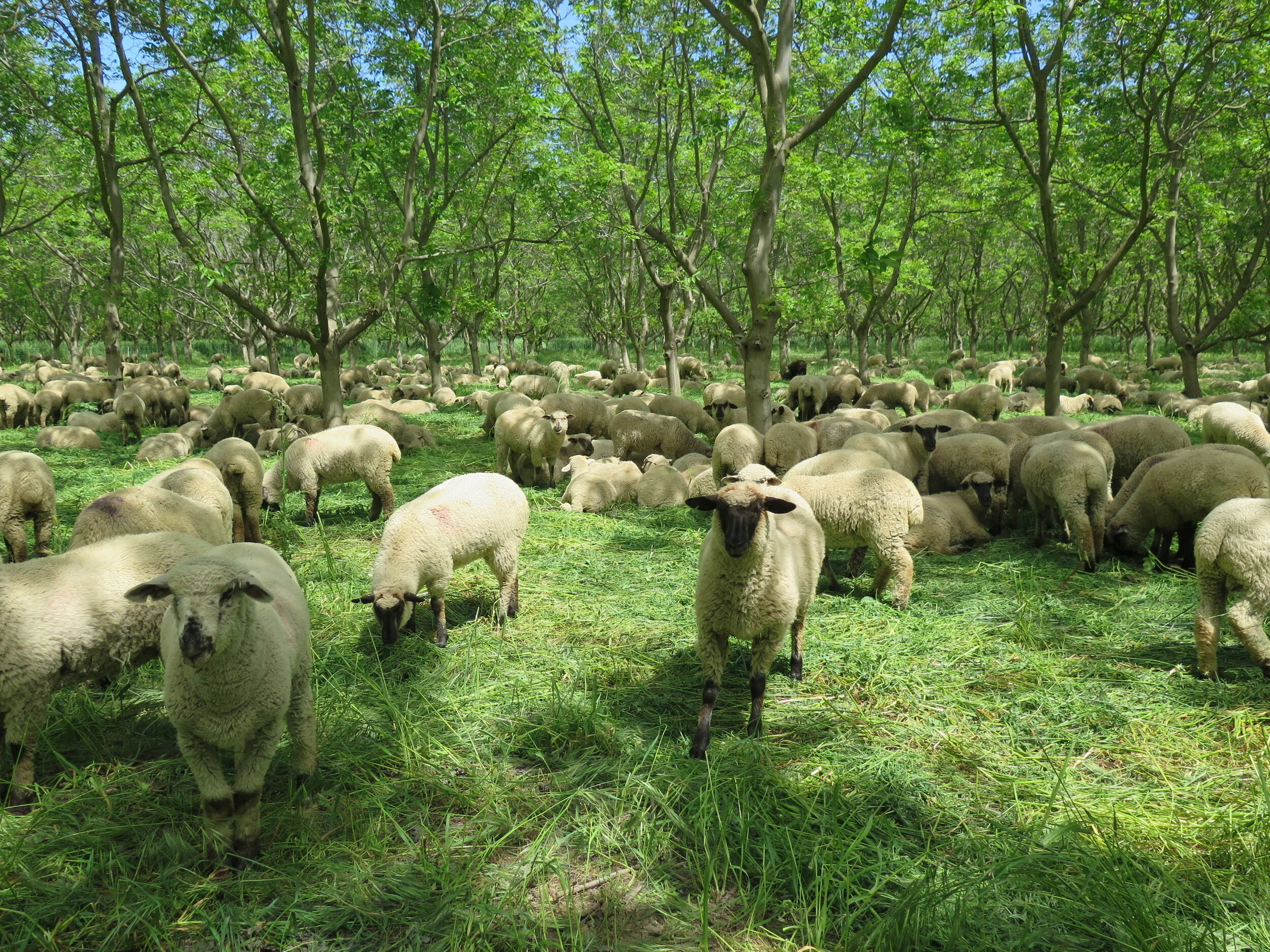Farming with minimally tilling the orchard floor is one of several practices we use to increase soil health and carbon sequestration. We graze, mow, and roller-crimp to control for weeds and manage our cover crops, significantly reducing the need to till our soils. By implementing no-till/low-till practices, beneficial microbes and mycorrhizal fungi are able to flourish. Further, by leaving crop residue on the surface and not disturbing the soil structure, soil organic matter is preserved which aids in water retention and carbon sequestration.
Our transition to no-till farming has been a journey of trial and error. When we first started farming the property, we were using full-tillage practices. However, as our interest and knowledge in cover crops grew, so did our understanding of managing the orchard floor. From full-tillage, we transitioned to some discing after harvest to prep the soil for a grain drill that we used to plant our cover crops. Then we began using just the grain drill with no discing. In 2015, we switched to solely broadcasting a diverse cover crop mixture across our orchards, and we continue using this practice to plant our cover crops today.
The ability to broadcast our cover crop seed comes from the 20+ years of work we have done to rebuild our soil organic matter and soil structure. The increase in soil health has resulted in softer soil that is covered by a layer of duff and humus that allows the broadcasted seed to receive proper seed-soil contact. When our soils were more compacted, we were not able to effectively plant cover crop seed without drilling.
What is No-Till/Low-Till?
Great question. In 2021, we had to till a portion of our orchard due to the significant damage squirrels caused to the orchard floor. Since 2021, we have tilled another 25-50 acres a year to re-level sections of our orchards. Because we are organic, we don’t have a foolproof way to control for squirrels and other pests that drastically disturb the orchard floor. This disturbance creates challenges during harvest, resulting in a loss of revenue as walnuts are left on the ground. The unharvested walnuts or “mummy nuts” also lead to greater pest damage as the nuts become hosts for pests such as navel orangeworm.
